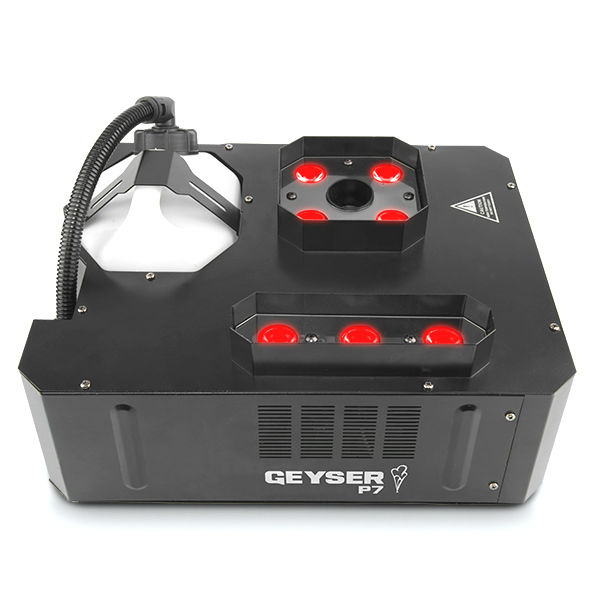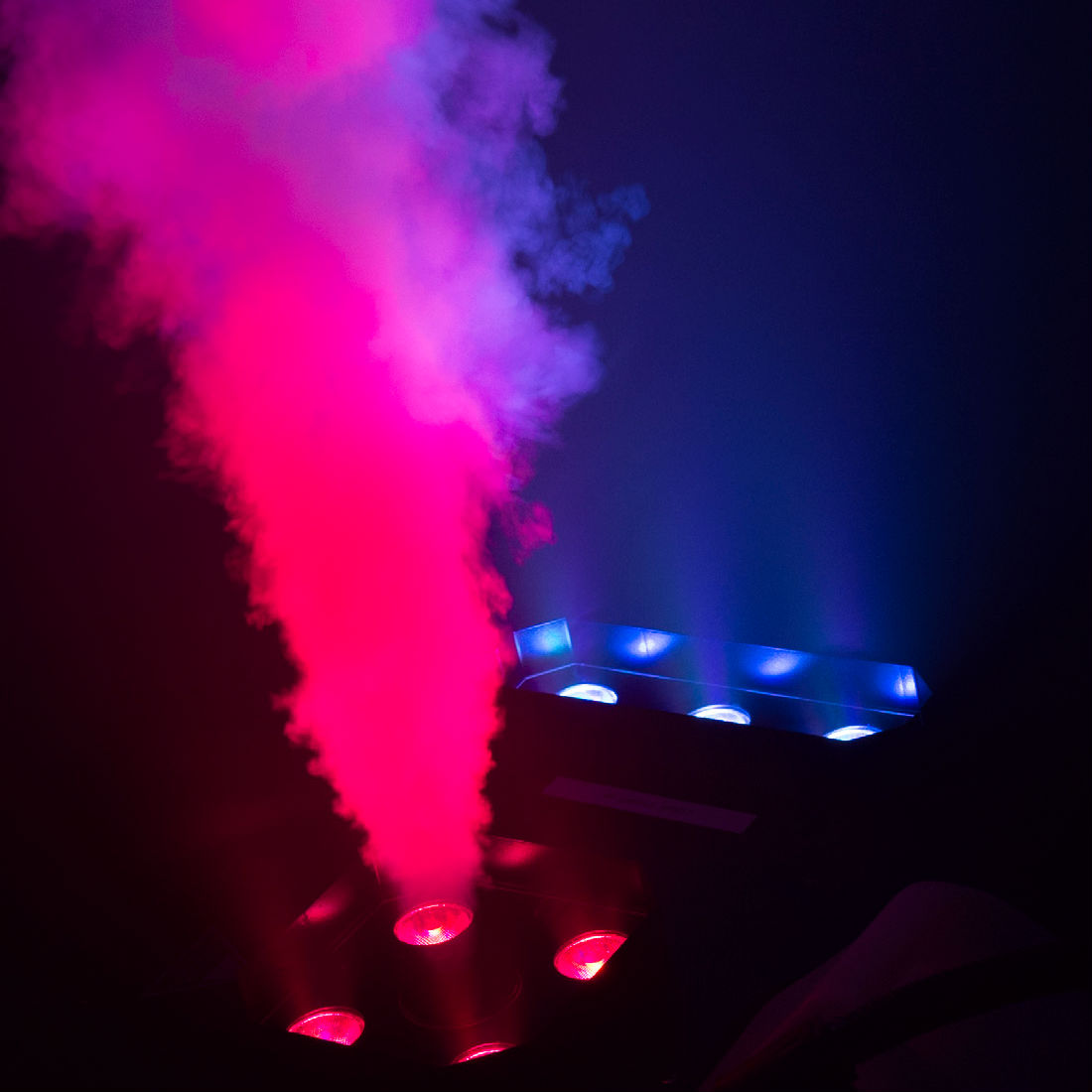Foggy Notions - Part 1
Fog machines are perhaps the most widely used special effects device in the theatre today. Advances in technology over the past several years have developed them from noisy boxes emitting foul-smelling smoke into fairly quiet devices capable of producing huge amounts of virtually scent-free fog. Fog machines have also dropped in price significantly over the years so that, today, a fog machine is within the budget of almost any school or community theatre group.
But how do they work? The specifics of any fog machine's operation can vary among manufacturers, but the basics are the same. Fog fluid is introduced into a heat exchanger by a pump. The heat exchanger is a block of metal with a heating element inserted into it. The element, controlled by a thermostat, keeps the heat exchanger at a high temperature. A path is made through the heat exchanger for the fog fluid. As the fluid is pumped into the heat exchanger, the high temperature causes it to "flash," or vaporize and expand rapidly. The rapid expansion of the vapor as it flashes causes it to be forced out of a nozzle or series of nozzles at the front of the machine. As the vapor mixes with the cooler air outside the machine, it instantly forms an opaque aerosol -- in other words, fog.
If you are planning to use fog in an upcoming production, there are several factors you should consider, such as volume (amount of fog needed), source (where the fog comes from), and health and safety (smoke alarms and other considerations). As with any aspect of a production, careful attention should be paid to all aspects of a fog effect. Doing so will result in a much better effect and avoid many possible problems.
The volume of fog needed for an effect is generally governed by the venue in which the effect is being used. Most of the fog machines we sell have their output volume listed in cubic feet/minute. For example, the FG-940 has a listed output of 7,000 cubic ft/min. This means that, at maximum output, the FG-940 could fill a 20' x 30' stage with a 10' ceiling in under one minute! Notice that I say "at maximum output." This is because some foggers (such as our FG-950) have variable fog output. Variable output is achieved by controlling the amount of fluid introduced into the heat exchanger. This allows you to adjust fog volume for smaller or larger venues and also to create different volumes of fog within the same space. Remember, every effect does not necessarily call for a London pea-soup!
The source of the fog is not always a concern. Many times, simply having the fog pumped on stage during a blackout is all that's needed. There will be times; however, when the fog needs to appear to come from a specific source. Perhaps it's the steam-pipes in the sewer for "Guys and Dolls", or the basement door in "You Can't Take it With You". Whatever the case, it may not be possible to have the fog machine near where the effect needs to occur. In these cases, ducting can be used to direct the fog. Most fog ductwork is constructed of either heavy-duty dryer hose or rigid PVC pipe. Any ductwork used for fog should be at least four inches in diameter as smaller diameter tubes can constrict fog and cause it to recondense into fluid. Also, recall that fog is not created until the vapor from the machine mixes with fresh air. Therefore, an "airspace" of a few inches should be left between the machine and the ductwork. If the fog needs to travel a long distance, a fan may be added to the system via a Y connection. Fog should not be pumped directly over the fan blades as this will break up the fog, leaving residue on the fan and reducing the overall output.
Health and safety issues should be considered whenever adding a special effect to a show. When using fog in a show, it may be a good idea to forewarn your audience. While fog machines and fluids have developed to the point that they are completely nontoxic and safe for use around most people, asthmatics and others with respiratory difficulty may not wish to subject their lungs to any additional stress. In any case, you should always use the least amount of fog necessary to create the required effect.
Another issue to consider is whether the fog will set off smoke detectors in the venue. The sensitivity of smoke detection systems varies greatly, so it's best to test your fogger only after notifying the building supervisor and, if necessary, the local fire department. Involving these people in your production early in the process can go a long way towards preventing possible clashes at show time.
With these tips, and a little common sense, you should be well on your way to effectively using fog in your next production. More information about fog machines and the use of fog on stage can be found in the following sources, which were instrumental in the writing of the article.
"Introduction to Modern Atmospeheric Effects" - Published by ESTA, this booklet offers general information about fog machines and suggestions for their use. We offer this booklet for sale as item #BK22.
"Scene Design and Stage Lighting", by Parker and Wolf - One of the "bibles" of stage technology. The section of fog and smoke effects is short, but helpful.
www.esta.org/tsp/fogdocs.html, which provides enough technical fog data for a full day's reading!
*********************************************
Theatre Effects Customer Service Department
service@theatrefx.com
www.theatrefx.com
Theatre Effects, 1810 Airport Exchange Blvd. #400, Erlanger, KY 41018
Phone: 1-800-791-7646 or 513-772-7646 Fax: 513-772-3579









